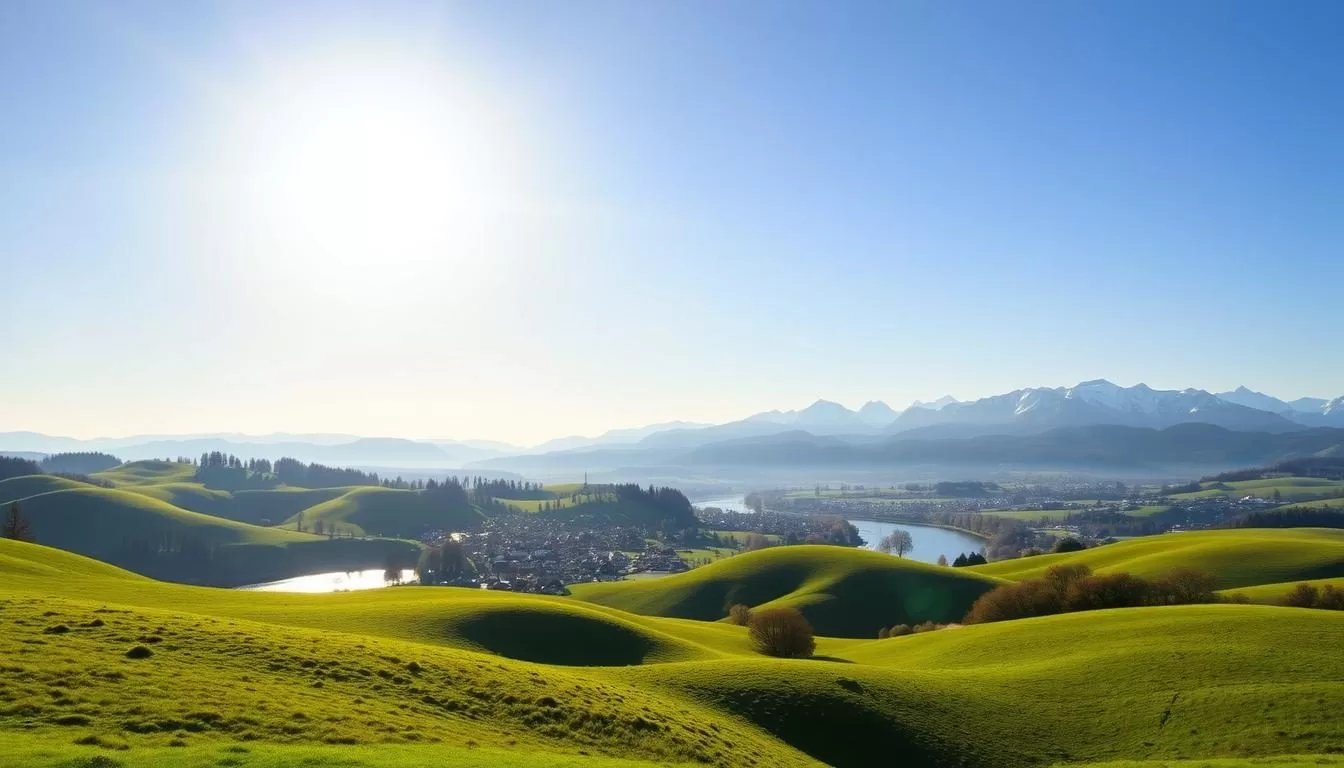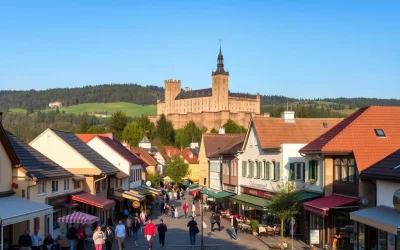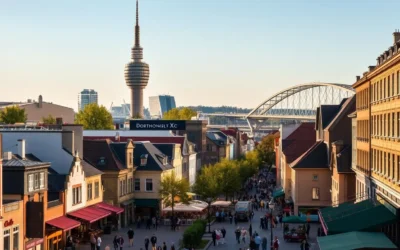✓ Accommodations✓ Flights✓ Rental Cars
Planning a trip to a destination with ideal weather and stunning landscapes can make all the difference. This region is known for its dynamic climate, offering something special in every season. Whether you’re drawn to cherry blossoms in spring or lively festivals in summer, timing your visit right ensures a memorable experience.
The temperature here varies throughout the year, creating a diverse range of activities and sights. From blooming fields to cultural events, each season brings its own charm. Understanding these patterns helps you make the most of your adventure.
This guide will walk you through the best time to explore this area, balancing mild weather with exciting local happenings. Let’s dive into what makes this countryside a must-visit for every traveler.
Introduction: Why Timing is Key for Your German Adventure
Timing your trip can transform your experience from ordinary to extraordinary. The time of year you choose to visit shapes everything from the weather to the events you’ll encounter. Whether you’re drawn to blooming landscapes or vibrant festivals, planning ahead ensures you don’t miss out.
Understanding the Importance of Seasonal Planning
Selecting the right time to travel isn’t just about avoiding bad weather. It’s about aligning your trip with the culture and traditions of the region. For example, visiting in spring lets you enjoy mild temperatures and iconic events like cherry blossom celebrations.
Planning your trip around these moments ensures you experience the destination at its best. You’ll avoid large crowds and enjoy a more authentic connection with the local lifestyle.
How the Weather and Festivals Shape Your Experience
Weather plays a big role in what you can do each day. Sunny skies are perfect for exploring outdoor markets, while cooler temperatures might lead you to cozy cafes. Festivals, like Berlin Fashion Week, add another layer of excitement to your journey.
Here’s a quick look at how different seasons influence your trip:
| Season | Weather | Key Events |
|---|---|---|
| Spring | Mild, blooming | Cherry Blossom Festivals |
| Summer | Warm, sunny | Berlin Fashion Week |
| Fall | Crisp, colorful | Oktoberfest |
| Winter | Cold, snowy | Christmas Markets |
“The right timing turns a simple trip into a lifelong memory.”
By understanding these patterns, you can craft an itinerary that matches your preferences. Whether you’re chasing festivals or seeking serene landscapes, this guide will help you make the most of every moment.
Understanding Seasonal Impacts on Your Visit
Understanding the seasonal shifts can make your trip more enjoyable and stress-free. The climate here varies significantly throughout the year, influencing everything from outdoor activities to local events. By knowing what to expect, you can plan a trip that aligns perfectly with your interests.

Seasonal Weather Patterns and What They Mean for You
Spring often brings mild temperatures and occasional thunderstorms. This period is ideal for exploring blooming landscapes, but frequent rain might require waterproof gear. Summer offers warm, sunny days, perfect for outdoor adventures and festivals.
Fall is crisp and colorful, with cooler average temperatures that make hiking and sightseeing comfortable. Winter, on the other hand, is cold and snowy, transforming the region into a winter wonderland. However, heavy snowfall can sometimes disrupt travel plans.
Influence of Climate on Outdoor Activities
The climate directly affects what you can do during your visit. Sunny summer days are great for cycling and exploring markets, while winter snow opens up opportunities for skiing and snowshoeing. Be prepared for sudden weather changes, especially in spring and fall.
Here’s a quick guide to help you plan:
- Spring: Pack a raincoat and enjoy blooming gardens.
- Summer: Bring sunscreen and light clothing for outdoor activities.
- Fall: Layer up for cool mornings and warm afternoons.
- Winter: Bundle up and embrace snowy adventures.
“Adapting to the seasons ensures you make the most of every moment.”
Checking seasonal forecasts before your trip can help you adjust your plans accordingly. Whether you’re hiking, sightseeing, or attending local events, understanding the climate ensures a smoother and more enjoyable experience.
Regional Weather Patterns in Schleswig-Holstein
Exploring the diverse weather patterns across different areas can enhance your travel experience. The region offers a mix of coastal breezes and inland climates, each with its own charm. Understanding these differences helps you choose the perfect spot for your adventure.
Coastal areas are known for their milder temperatures and consistent wind. The proximity to water keeps the climate cooler in summer and warmer in winter. Inland areas, however, experience more extreme temperature shifts, with hotter summers and colder winters.
Comparing Coastal and Inland Conditions
The coast benefits from the moderating effects of the water. This creates a more stable climate, ideal for outdoor activities like cycling along the scenic coastline. Inland, the weather can be more unpredictable, with sudden rain or temperature drops.
Here’s a quick comparison of the two:
| Area | Weather | Best Activities |
|---|---|---|
| Coastal | Mild, windy | Cycling, beach walks |
| Inland | Variable, seasonal | Hiking, exploring towns |
The wind along the coast is a defining feature, making it a favorite for sailing and kite flying. Inland, the lack of wind allows for calm, clear days perfect for sightseeing. Each area offers unique opportunities based on its climate.
When planning your trip, consider what activities you enjoy most. If you love the feel of the ocean breeze, the coast is your ideal destination. For those who prefer diverse landscapes and seasonal changes, inland areas provide endless exploration.
“The right location can turn a good trip into an unforgettable adventure.”
By understanding these regional differences, you can tailor your journey to match your preferences. Whether you’re drawn to the coast or the countryside, the region has something special to offer.
Schleswig-Holstein, Germany: Best Months for a Weather-Savvy Trip
May is a standout month for travelers seeking the perfect balance of weather and tranquility. With mild temperatures, blooming landscapes, and fewer tourists, it’s the ideal time visit for a relaxed and enjoyable experience. This month offers a unique blend of comfort and excitement, making it a favorite among savvy travelers.

Why May Stands Out as the Ideal Month
During May, the weather is mild, with average temperatures ranging from 50°F to 65°F. This makes outdoor activities like hiking, cycling, and exploring local markets more enjoyable. Unlike the crowded summer months, May offers a more relaxed atmosphere, allowing you to fully immerse yourself in the region’s charm.
One of the biggest advantages of visiting in May is the manageable crowd levels. You’ll avoid the peak tourism season, which means shorter lines, more availability, and a more authentic experience. Whether you’re strolling through blooming gardens or attending local festivals, you’ll have the space to savor every moment.
May is also rich in cultural events. From spring festivals celebrating the season’s beauty to traditional markets showcasing local crafts, there’s always something to enjoy. These events add depth to your trip, giving you a glimpse into the region’s vibrant culture.
“May’s mild weather and lower crowds make it the perfect time visit for a stress-free adventure.”
Compared to the colder winter months or the bustling summer season, May strikes the right balance. It’s the best time visit for those who want to enjoy the outdoors without the hassle of extreme weather or overcrowded attractions. If you’re planning a trip, consider May for an effortless and memorable experience.
Temperature Trends and Outdoor Activity Opportunities
Understanding temperature trends can elevate your outdoor adventures. The region’s climate varies significantly across seasons, offering unique opportunities for hiking, cycling, and exploring. By knowing what to expect, you can plan activities that align with the weather and make the most of your trip.
Average Highs and Lows Across the Seasons
Spring brings mild temperatures, with highs around 55°F and lows near 40°F. This is perfect for blooming landscapes and early hikes. Summer sees warmer days, with highs reaching 75°F and cooler evenings around 60°F, ideal for cycling and beach walks.
Fall offers crisp air, with highs of 65°F and lows dipping to 45°F. This season is great for scenic drives and exploring the countryside. Winter is colder, with highs around 40°F and lows near freezing, making it a cozy time for indoor activities or snowy adventures.
Best Times for Hiking, Cycling, and Exploring Outdoors
The summer months, especially June and July, are the peak for outdoor activities. Warm days and long daylight hours make hiking and cycling enjoyable. The countryside shines during this time, with moderate highs and cool evenings perfect for evening strolls.
For those who prefer milder weather, late spring and early fall are excellent choices. These weeks offer comfortable temperatures and fewer crowds, allowing you to explore at your own pace. Whether you’re hiking through lush trails or cycling along scenic routes, timing your adventures ensures maximum comfort.
“Aligning your activities with the weather turns a good trip into an unforgettable experience.”
By understanding these trends, you can confidently plan your outdoor tasks. Whether you’re drawn to the warmth of summer or the crisp air of fall, the region offers something for every adventurer.
Festivals and Cultural Experiences Throughout the Year
Festivals and cultural events breathe life into every season, offering a glimpse into the heart of local traditions. From vibrant spring celebrations to cozy winter markets, these gatherings are a window into the region’s rich history and vibrant culture. Whether you’re sipping beer at Oktoberfest or strolling through a christmas market, each event tells a story.
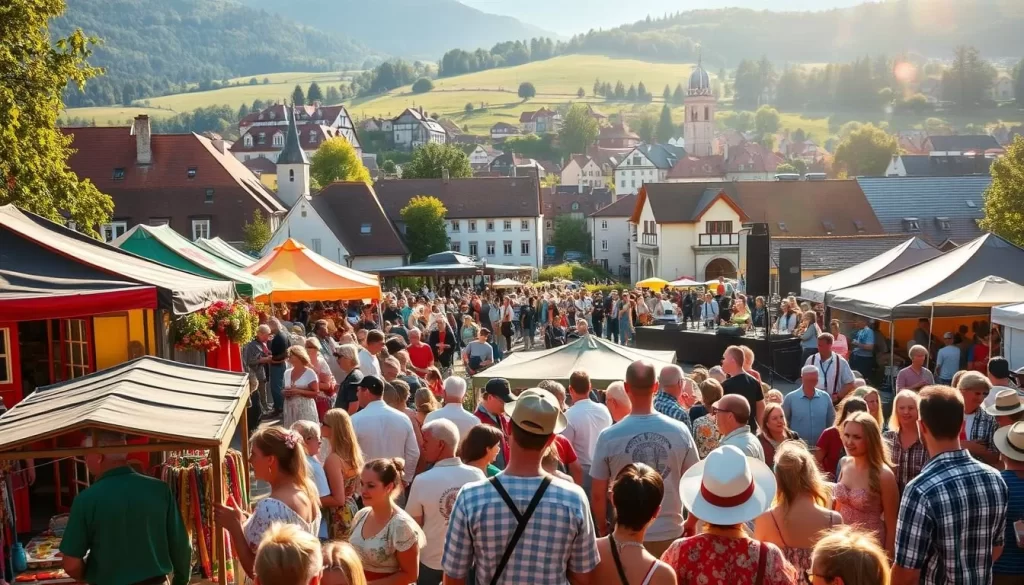
Spring Celebrations and May Festivities
Spring is a time of renewal, and the region celebrates with lively festivals that bring communities together. Traditional maypole dances are a highlight, symbolizing the arrival of warmer days. These events often feature local crafts, music, and food, creating a festive atmosphere.
May is particularly special, with events like the city’s spring festivals. These gatherings showcase blooming flowers, traditional dances, and local delicacies. It’s a time to connect with the community and experience the region’s cultural roots.
Oktoberfest, Christmas Markets, and Other Iconic Events
When fall arrives, the region transforms into a hub of celebration. Oktoberfest, the world-famous beer festival, is a must-visit. With its lively tents, traditional music, and hearty food, it’s a celebration of Bavarian culture that attracts visitors from around the globe.
Winter brings the magic of christmas markets. These markets are filled with twinkling lights, handmade gifts, and seasonal treats. They’re a perfect way to embrace the holiday spirit and explore the region’s festive traditions.
| Event | Season | Highlights |
|---|---|---|
| Maypole Dances | Spring | Traditional dances, local crafts |
| Oktoberfest | Fall | Beer, music, Bavarian food |
| Christmas Markets | Winter | Handmade gifts, seasonal treats |
“Festivals are the heartbeat of culture, bringing people together to celebrate life’s moments.”
These events are more than just fun—they’re a way to connect with the region’s history and traditions. Whether you’re raising a glass at Oktoberfest or exploring a christmas market, you’ll leave with unforgettable memories and a deeper appreciation for the culture.
Navigating Tourist Crowds and Seasonal Pricing
Traveling during quieter times can transform your experience, offering both savings and serenity. By avoiding peak tourist seasons, you can enjoy a more relaxed and budget-friendly trip. This approach not only saves money but also allows you to explore your chosen place without the stress of large crowds.
Advantages of Travel During Off-Peak Seasons
Off-peak travel comes with numerous benefits. Accommodation and flight prices drop significantly, making it easier to stay within your budget. Visiting a popular place during these periods means fewer tourists, giving you more space to enjoy attractions and interact with locals.
Another advantage is the ability to experience a destination more authentically. Without the hustle and bustle of peak season, you can take your time exploring hidden gems and enjoying a slower pace. Evening or night visits to attractions can also enhance your experience, as many places are beautifully lit and less crowded.
| Season | Crowd Level | Average Cost |
|---|---|---|
| Peak (July-August) | High | €150+ per night |
| Shoulder (April-June, September-October) | Moderate | €90-€120 per night |
| Low (November-March) | Low | €32-€68 per night |
Here are some practical tips to make the most of off-peak travel:
- Plan your trip during shoulder seasons for pleasant weather and lower prices.
- Visit popular attractions early in the morning or late at night to avoid crowds.
- Book accommodations and activities in advance to secure the best deals.
- Explore lesser-known places for a unique and personalized experience.
“Traveling off-peak lets you discover the soul of a destination without the chaos of crowds.”
By choosing the right time to visit, you can enjoy a more relaxed and rewarding trip. Whether you’re exploring a bustling city or a serene countryside, off-peak travel ensures a memorable and stress-free adventure.
Practical Travel Tips for Every Season
Smart packing and local knowledge can make your travels stress-free and memorable. Whether you’re exploring snowy landscapes or enjoying mild spring days, being prepared ensures you stay comfortable and ready for adventure. Here’s how to pack wisely and use local insights to enhance your journey.
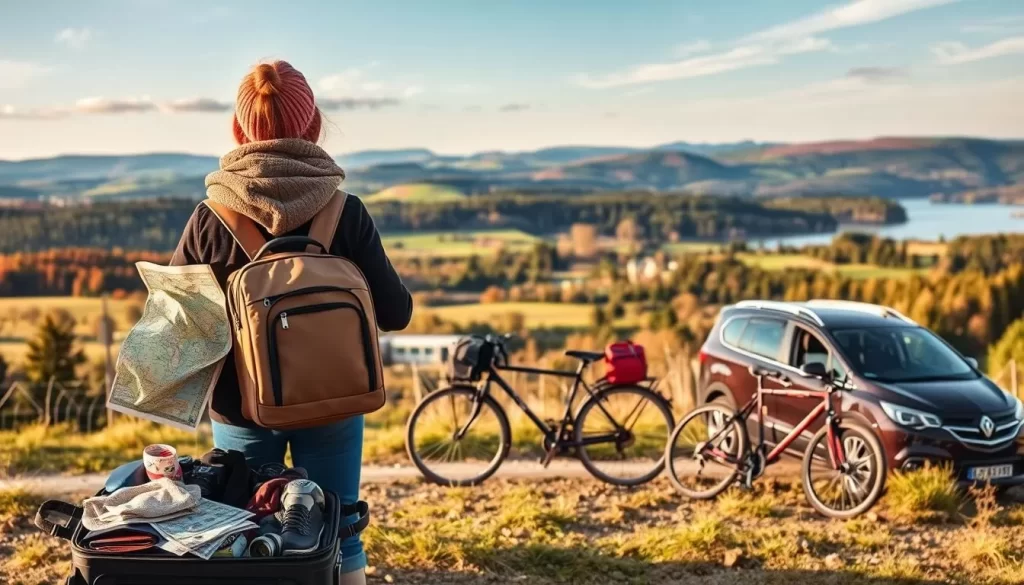
Packing Essentials for Changing Weather
Seasonal shifts mean your packing list should adapt to the weather. For winter, focus on staying warm with thermal wear, waterproof boots, and insulated layers. These items are essential for braving cold temperatures and unexpected snowfall.
In spring and fall, pack versatile clothing like lightweight jackets and scarves. These layers help you adjust to sudden temperature changes. Summer calls for breathable fabrics, sunscreen, and a hat to protect against the sun.
Here’s a quick checklist for each season:
- Winter: Thermal wear, waterproof boots, gloves, and a heavy coat.
- Spring/Fall: Light jackets, scarves, and comfortable walking shoes.
- Summer: Breathable clothing, sunscreen, and a reusable water bottle.
“The right gear ensures you’re ready for whatever the weather brings.”
Local Insights to Enhance Your Journey
Local knowledge can transform your trip. During winter, ask about indoor activities or cozy cafes to escape the cold. In summer, locals can recommend the best beaches or outdoor markets to explore.
Adjust your itinerary based on the weather. If rain is forecast, swap outdoor plans for museums or cultural events. Staying flexible ensures you make the most of your time, regardless of the season.
Here are some tips to use local insights effectively:
- Ask locals for hidden gems and seasonal events.
- Check weather forecasts daily to adjust plans.
- Embrace the season’s unique offerings, like winter markets or summer festivals.
“Local tips add depth to your journey, making it more authentic and enjoyable.”
By packing smart and leveraging local knowledge, you’ll stay prepared and make the most of every season. Whether you’re chasing warmth in summer or embracing the charm of winter, these tips ensure a seamless and memorable trip.
Weather Insights for Major German Cities
Exploring major cities in Germany offers a unique blend of culture and weather experiences. Each city has its own climate patterns, shaping the way you explore and enjoy your visit. Whether you’re strolling through Berlin’s historic streets or enjoying Munich’s lively festivals, understanding the weather helps you plan better.
Berlin: Urban Experiences with Unpredictable Weather
Berlin’s weather is as dynamic as its culture. The city is known for sudden showers and rapid changes, even in the middle of summer. During winter, you might encounter occasional snow, transforming the city into a picturesque wonderland. However, these shifts can catch you off guard if you’re not prepared.
To make the most of your visit, pack layers and a waterproof jacket. This ensures you’re ready for anything, whether it’s a sunny afternoon or a chilly evening. Berlin’s urban environment amplifies these changes, so checking the forecast daily is a must.
Munich and Hamburg: Festival Hubs and Coastal Breezes
Munich’s weather is more stable, especially during its famous festival season. Summers are warm and pleasant, perfect for outdoor events like Oktoberfest. The city’s inland location means fewer sudden changes, making it easier to plan your days.
Hamburg, on the other hand, benefits from coastal breezes. The proximity to water keeps temperatures mild, even in summer. However, the wind can be strong, so bring a light jacket for evening strolls along the harbor.
| City | Weather Characteristics | Best Activities |
|---|---|---|
| Berlin | Unpredictable, occasional snow | Museums, historic tours |
| Munich | Stable, warm summers | Festivals, outdoor dining |
| Hamburg | Mild, windy | Harbor walks, seafood markets |
Here’s a quick guide to help you plan your city tours:
- Berlin: Pack layers and check the forecast daily.
- Munich: Enjoy stable weather during festivals, but bring sunscreen.
- Hamburg: Embrace the coastal breeze with a light jacket.
“Understanding the weather in each city ensures a smoother and more enjoyable trip.”
By tailoring your plans to these insights, you can explore Germany’s major cities with confidence. Whether you’re chasing snow in Berlin or enjoying Munich’s festivals, the right preparation makes all the difference.
Deep Dive into Climate Data for Schleswig
Understanding the climate data of a region can significantly enhance your travel planning. Schleswig’s weather patterns are shaped by its unique location, offering a mix of coastal and inland influences. By analyzing temperature, rainfall, snowfall, wind, and cloud cover, you can make informed decisions for your trip.
Temperature, Rainfall, and Snowfall Trends
Schleswig experiences mild summers and cool winters, with average temperatures ranging from 35°F in January to 65°F in July. Rainfall is consistent throughout the year, averaging 30 inches annually. Snowfall is moderate, with around 15 inches during winter months, making it ideal for seasonal activities.
Here’s a breakdown of the yearly climate trends:
| Month | Avg. Temperature (°F) | Rainfall (inches) | Snowfall (inches) |
|---|---|---|---|
| January | 35 | 2.5 | 5 |
| July | 65 | 3.0 | 0 |
Compared to the global average, Schleswig’s climate is milder, offering a comfortable balance for travelers. Understanding these trends helps you pack appropriately and plan activities that align with the weather.
Understanding Wind Patterns and Cloud Cover
Wind patterns in Schleswig are influenced by its coastal proximity, with average speeds of 12 mph. This creates a refreshing breeze, especially during summer. Cloud cover varies, with overcast skies common in winter and clearer skies in summer.
Here’s how these factors impact your trip:
- Wind: Ideal for outdoor activities like sailing or kite flying.
- Cloud Cover: Winter’s overcast skies create a cozy atmosphere, while summer’s clear skies are perfect for sightseeing.
“Schleswig’s climate is a blend of comfort and adventure, offering something for every traveler.”
By understanding these patterns, you can tailor your itinerary to make the most of your visit. Whether you’re exploring the world-famous landmarks or enjoying the serene beauty of the island, Schleswig’s climate ensures a memorable experience.
Planning a Flexible Itinerary Year-Round
Creating a flexible travel plan ensures you’re ready for any adventure, no matter the season. Weather can be unpredictable, and aligning your schedule with local events can make your trip more enjoyable. By staying adaptable, you can maximize every moment and avoid unnecessary stress.
How to Align Your Schedule with Seasonal Events
Seasonal events often define the rhythm of a destination. Research local festivals, markets, and cultural happenings before your trip. This allows you to adjust your itinerary to include these highlights. For example, visiting during a cherry blossom festival or a winter market can add a unique layer to your experience.
Here are some strategies to stay flexible:
- Check event calendars for your chosen site and mark key dates.
- Plan buffer days to accommodate last-minute changes or weather shifts.
- Use apps or local resources to stay updated on real-time event schedules.
Benefits of Flexible Accommodations
Booking accommodations with flexible cancellation policies is a game-changer. It allows you to adjust your stay if weather or plans change unexpectedly. Many hotels and rental platforms offer this option, giving you peace of mind.
Consider these tips when booking:
- Look for properties with free cancellation or rescheduling options.
- Choose central locations that make it easy to explore multiple sites.
- Read reviews to ensure the accommodation meets your needs.
“Flexibility in travel planning turns challenges into opportunities for discovery.”
Managing Weather-Related Changes
Weather can shift quickly, especially in regions with dynamic climates. Pack versatile clothing and gear to stay prepared. If rain disrupts your outdoor plans, have a backup list of indoor sites or activities.
Here’s how to stay adaptable:
- Monitor weather forecasts daily and adjust plans accordingly.
- Prioritize outdoor activities for sunny days and save indoor sites for inclement weather.
- Stay open to spontaneous changes—sometimes the best experiences are unplanned.
By viewing your travel plan as a series of sites to explore at your own pace, you can embrace the unexpected and make the most of every season. Flexibility is the key to a stress-free and memorable journey.
Conclusion
Planning your trip with seasonal insights ensures a smoother and more enjoyable experience. Understanding the temperature, wind, and other weather patterns helps you make the most of each day. Whether you’re exploring an island or attending a festival, timing is key.
Every part of the year offers unique opportunities. From mild springs to cozy winters, each season brings its own charm. By aligning your itinerary with these patterns, you can avoid crowds and enjoy a more authentic journey.
Small details, like checking the forecast or packing for sudden wind shifts, make a big difference. With careful planning, your trip will be both memorable and enriching.
The above is subject to change.
Check back often to TRAVEL.COM for the latest travel tips and deals.
